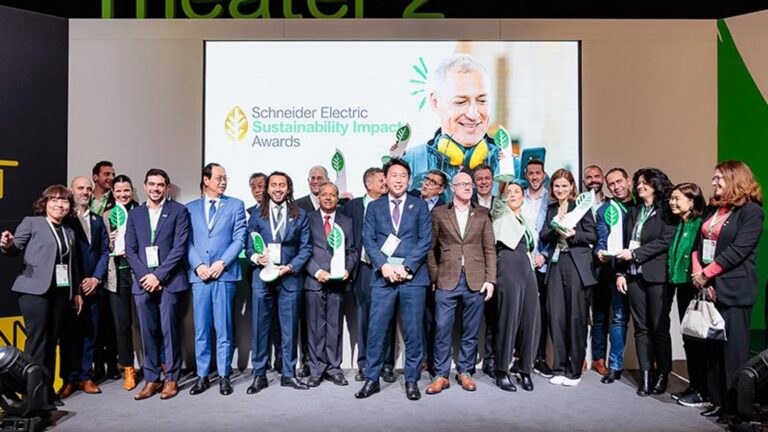Saturday, July 5, 2025
In a resounding victory for environmental and cultural preservation, the Ta’an Kwäch’än Council (TKC) Settlement Land project in Whitehorse, Yukon, earned the coveted Brownie Award for Best Small Project at the 2023 Brownie Awards.
Hosted by the Canadian Brownfields Network (CBN) and Actual Media Inc., the annual Brownie Awards celebrate excellence in the rehabilitation and sustainable development of brownfield sites across Canada.
“The remediation of this contaminated site through collaboration and partnership is another step our government is taking to support reconciliation. Cleaning up contaminated sites is not an easy task, but these important projects help protect our health, land, water and air,” said Minister of Environment Nils Clarke. “By cleaning up contamination we are reducing environmental liability and ensuring a healthier environment for future generations. I am proud of the work that was accomplished.
The TKC project distinguished itself through its holistic approach to restoring lands that hold deep cultural significance to the TKC, a First Nation with an enduring connection to the region.
The Ta’an Kwäch’än Council leadership
The Ta’an Kwäch’än Council, one of the First Nations within the Southern Tutchone cultural group, has a rich history that stretches back over 8,000 years in the Yukon.
The TKC’s traditional territory spans vast areas around Whitehorse, Lake Laberge, and the upper Takhini River, areas that have been utilized for fishing, hunting, and gathering for millennia.
The TKC’s modern history as a recognized political entity began in 1902 when Chief Jim Boss made history by petitioning the Canadian government to protect the lands and rights of the TKC amidst the encroachment of settlers during the Klondike Gold Rush. His foresight and advocacy led to the establishment of the TKC’s land rights, which were formalized in the 2002 Ta’an Kwäch’än Council Final Agreement.

“This site was once a historical harvesting site for our Citizens and has become a priority for our community due to the magnitude of contamination left on the abandoned property,” said Chief Ta’an Kwäch’än Council Amanda Leas. “Thanks to the huge support of our partners, the restoration work is proof that when we all share a commitment towards remediation great progress can be made. We were also fortunate that Mother Earth herself got involved in this work with the collapse of the Mud Lake Beaver Dam. This helped cleanse the site, a testament that nature itself continues to provide harmony within our Settlement Lands and Traditional Territory.”
Restoring a vital landscape
The successful remediation of the TKC Settlement Land was made possible through a strong partnership between the TKC, SLR Consulting, the Government of Yukon, and the Federal Government, particularly Crown-Indigenous Relations and Northern Affairs Canada (CIRNAC).
In 2017, the site owner operator passed away, and the Government of Yukon took responsibility for cleaning up the contaminated site with the financial support of the Government of Canada.
The project was launched in 2019 with an environmental site assessment that confirmed soil and groundwater at the site had elevated concentrations of hydrocarbons and metals.
In 2019, restoration included demolishing site buildings, removing waste and debris, excavating and removing shallow contaminated soil, and landscaping and revegetation activities to restore the site.
The long-term monitoring program was established in 2020 and ended in 2022.
The collaboration was rooted in mutual respect and a shared goal: to restore the land to a condition that would support the TKC’s traditional activities and ensure its sustainability for future generations.
The remediation process involved several phases, beginning with a comprehensive environmental assessment that identified key challenges, such as soil contamination, disrupted water flow, and the loss of native vegetation. The project team employed a range of restoration techniques, including soil remediation, re-vegetation with native plant species, and the restoration of natural water channels.
Special attention was given to ensuring that the restoration efforts aligned with TKC cultural practices, particularly in the selection of plant species that are significant in TKC traditional medicine and food systems.
Challenges and achievements
The restoration of the TKC Settlement Land was not without its challenges. The site’s remote location and the complexity of the environmental damage posed logistical hurdles that required innovative solutions.
Additionally, delivering the needed programming to gain support for the restoration program from the community was quickly complicated in 2020 by the COVID-19 pandemic, as the community could no longer meet to discuss how the restoration should be carried out, nor see the impact on the site before and after the restoration works.
To address this issue, the project team changed their outreach approach. The revised approach included the production of media materials to support engagement activities, including:
1) developing a video that provided a visual documentation of the site;
2) producing a website that outlined the investigation approach, findings, and aims for restoration; and
3) releasing plain language guide digital pamphlets.
These items were shared with the TKC citizens so they could “see” the site, and understand the restoration plans, whilst remaining safe by self-isolating.
This novel engagement approach via digital outreach was successful in securing community agreement on the work and making the project a success. Following restoration, an ongoing monitoring program was established that included plans to provide training on the monitoring works to TKC citizens. The intention for the site was to pass on the long-term monitoring of the site to TKC, thus using the program to additionally provide education and training opportunities to the local community.
One of the major achievements of the project was the successful reintroduction of traditional plant species that had been lost due to mining activities. This not only restored the ecological balance but also reconnected TKC citizens with their ancestral practices of harvesting and using these plants for food, medicine, and cultural ceremonies.
TKC leadership also recognized that the project’s success depended on the active involvement and support of traditional knowledge.
To this end, the project team organized community workshops, field visits, and traditional knowledge-sharing sessions, where elders and youth could exchange knowledge about the land and its resources ensuring that the restoration process was guided by traditional ecological knowledge (TEK) and that the community felt a deep sense of ownership over the project.
A broader impact from lessons and legacy
The success of the TKC Settlement Land project has had a ripple effect, inspiring other First Nations and environmental groups to pursue similar restoration efforts.
The project serves as a model for integrating traditional knowledge with modern environmental science to achieve sustainable land management while highlighting the importance of collaborative partnerships between Indigenous communities and government agencies in addressing the environmental impacts of historical activities.
The recognition of the TKC project at the Brownie Awards 2023 is a testament to the project’s innovative approach and its significant contribution to environmental justice while bringing national attention to the ongoing efforts of the TKC to protect and restore their traditional lands, ensuring that these areas remain a vital part of their cultural heritage.
The Ta’an Kwäch’än Council Settlement Land project stands as a powerful example of how small-scale initiatives can drive significant environmental and cultural benefits. By restoring their land, the TKC has not only reclaimed a vital part of their traditional territory but also demonstrated the effectiveness of combining traditional knowledge with modern environmental practices.
To learn more about the Ta’an Kwäch’än Council Settlement Land Project and its progress, link here.
Note: The 2024 Brownie Awards are looking for photos from completed Brownfield projects: recognized winners or finalists at the Brownie Awards at any time in the past 25 years. All submissions are due by November 1st, 2024.
► form.jotform.com/242593939168270
 Reya Shreya Rai is an editorial intern for Environment Journal. She is a writer and a student of Contemporary Journalism at Centennial College.
Reya Shreya Rai is an editorial intern for Environment Journal. She is a writer and a student of Contemporary Journalism at Centennial College.
Featured image credits: TKC












